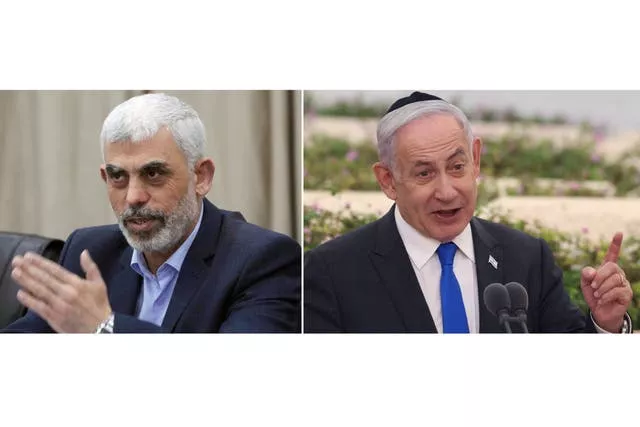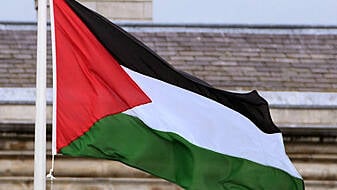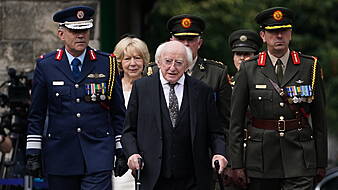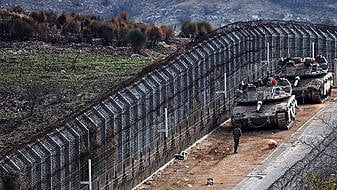Several officials in the Middle East and the US believe the level of devastation in Gaza caused by a nine-month Israeli offensive has likely helped push Hamas to soften its demands for a ceasefire agreement.
Over the weekend, Hamas appeared to drop its demand that Israel should promise to end the war as part of any ceasefire deal.
The sudden shift has raised new hopes for progress in internationally brokered negotiations.
Israeli prime minister Binyamin Netanyahu boasted on Sunday that military pressure – including Israel’s ongoing two-month offensive in the southern Gaza city of Rafah – “is what has led Hamas to enter negotiations”.
Hamas, an Islamic militant group that seeks Israel’s destruction and took control of Gaza in 2007, is highly secretive, with little known about its inner workings.

But in recent internal communications seen by The Associated Press, messages signed by several senior Hamas figures in Gaza urged the group’s exiled political leadership to accept the ceasefire proposal pitched by US president Joe Biden.
The messages, shared by a Middle East official, described the heavy losses Hamas has suffered on the battlefield and the dire conditions in the war-ravaged territory.
It is not known if this internal pressure was a factor in Hamas’ flexibility. But the messages indicate divisions within the group and a readiness among top militants to reach a deal quickly, even if Hamas’ top official in Gaza, Yahya Sinwar, may not be in a rush to do so.
Mr Sinwar has been in hiding since the war erupted last October and is believed to be holed up in a tunnel deep underground.
US officials declined to comment on the communications.
But a person familiar with Western intelligence said the group’s leadership understands its forces have suffered heavy losses and that has helped Hamas move closer to a ceasefire deal.
Two US officials say Washington is aware of internal divisions within Hamas and that those divisions, the destruction in Gaza or pressure from mediators Egypt and Qatar could have been factors in the militant group softening its demands for a deal.
The Middle Eastern official shared details from two internal Hamas communications, both written by senior officials inside Gaza to the group’s exiled leadership in Qatar, where Hamas’ supreme leader, Ismail Haniyeh, is based.

The communication suggested that the war had taken a toll on Hamas fighters, with senior figures urging the militant’s political wing abroad to accept the deal despite Mr Sinwar’s reluctance.
Hamas spokesperson Jihad Taha dismissed any suggestions of divisions within the group.
“The movement’s position is unified and is crystallised through the organisational framework of the leadership,” he said.
The messages acknowledged Hamas fighters had been killed and the level of devastation to the Gaza Strip wrought by the Israeli campaign in the enclave. They also suggest that Mr Sinwar either is not fully aware of the toll of the fighting or is not fully communicating it to those negotiating outside the territory.
It was not known whether Mr Haniyeh or any other top officials in Qatar had responded.
Israeli officials declined to comment on the communications. Egypt and Qatar also had no immediate comment.
Egypt and Qatar have been working with the United States to broker a ceasefire and end the devastating nine-month war. After months of fits and starts, talks resumed last week and are scheduled to continue in the coming days.

A deal is far from guaranteed. Mr Netanyahu’s office announced over the weekend that “gaps still remain”. US officials said they are cautiously optimistic about the prospects for a ceasefire based on the latest developments, but stressed that numerous efforts had looked promising only to fall through.
However, the sides appear closer to a deal than they have been in months.
Israel launched the war in Gaza after Hamas’ October attack in which militants stormed into southern Israel, killed some 1,200 people – mostly civilians – and abducted about 250. Israel says Hamas is still holding about 120 hostages – about a third of them thought to be dead.
Since then, the Israeli air and ground offensive has killed more than 38,000 people in Gaza, according to the territory’s health ministry, which does not distinguish between combatants and civilians.
The offensive has caused widespread devastation and a humanitarian crisis that has left hundreds of thousands of people on the brink of famine, according to international officials.
The war in Gaza has prompted international legal scrutiny of Israel’s conduct, including a case at the top UN court on charges of genocide brought by South Africa and a request for arrest warrants against Mr Netanyahu by the prosecutor of the International Criminal Court, who also sought warrants for Hamas leaders.







